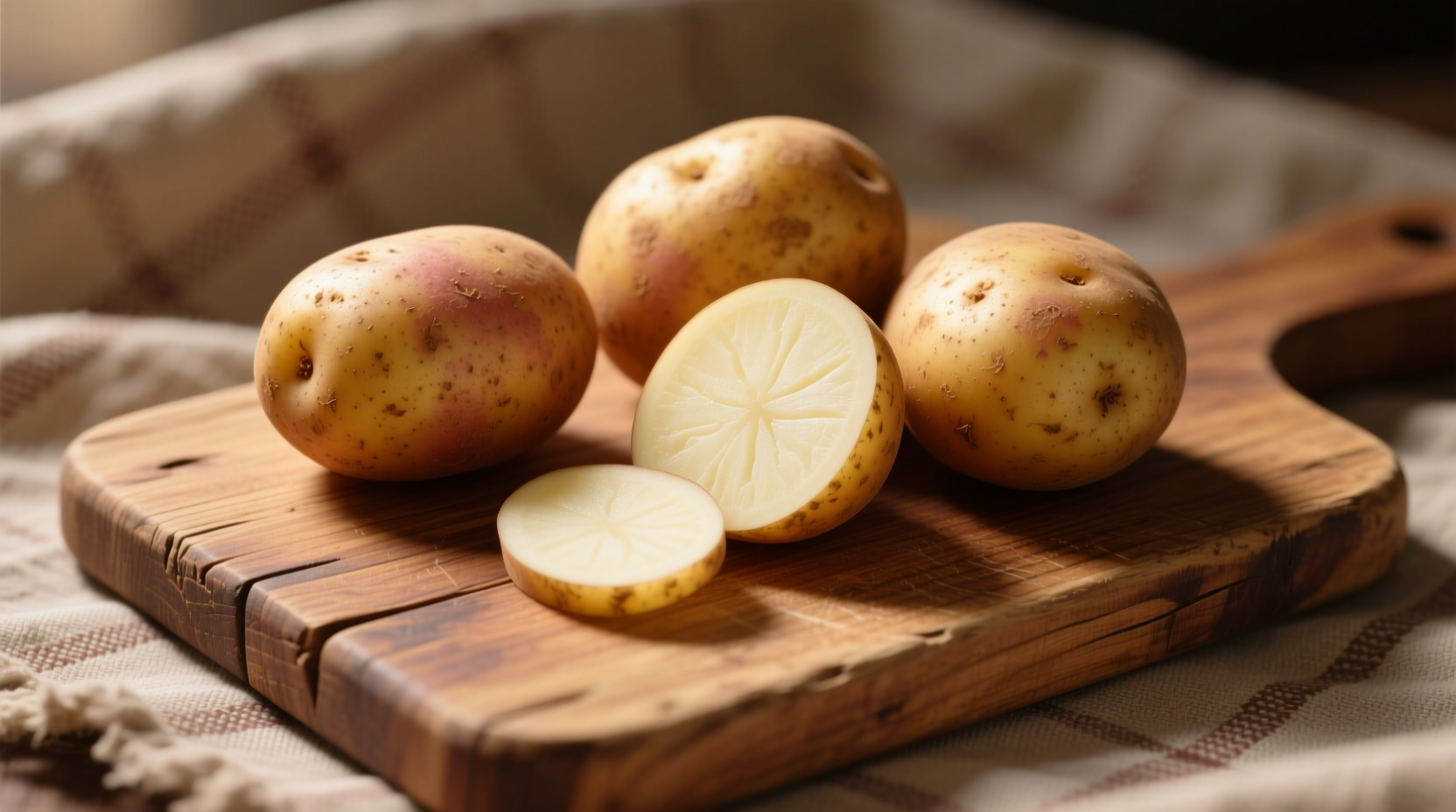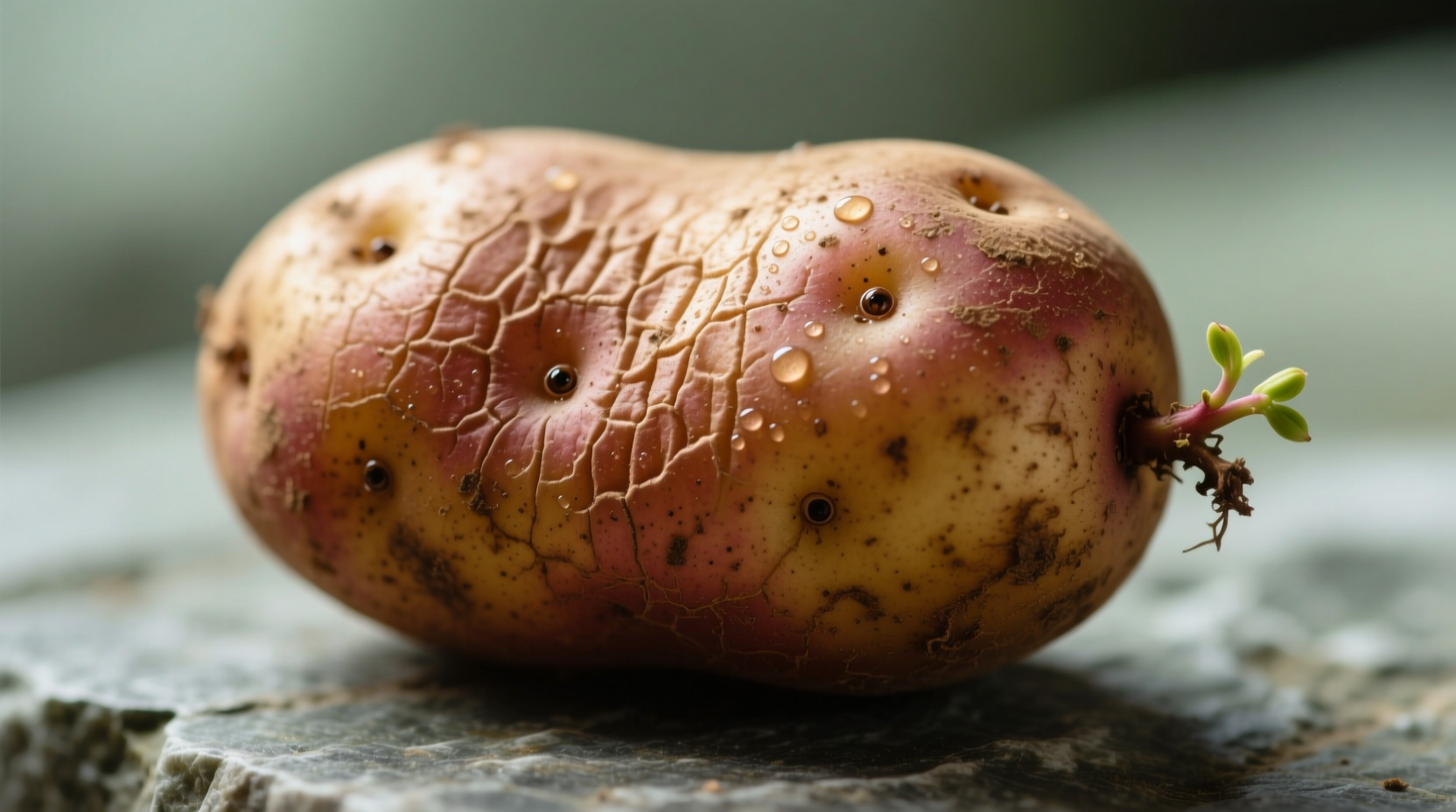Russet potatoes, also known as Idaho potatoes, are high-starch, low-moisture potatoes with thick brown skin and white flesh, making them ideal for baking, frying, and mashing due to their fluffy texture when cooked. They contain approximately 168 calories per medium potato and provide significant potassium and vitamin C.
Ever wonder why your baked potato turns out perfectly fluffy or why your french fries achieve that golden crisp? The secret often lies in choosing the right potato variety. Russet potatoes stand as the culinary workhorse in professional kitchens and home cooking alike, delivering unmatched texture and versatility for specific cooking applications.
What Makes Russet Potatoes Unique
Russet potatoes (Solanum tuberosum) earned their reputation through distinctive characteristics that set them apart from other varieties. Their high starch content (typically 18-22%) and low moisture create that signature light, fluffy interior when cooked properly. The thick, netted brown skin provides structural integrity during high-heat cooking methods while developing a delicious crispness.
Developed in the late 19th century by Luther Burbank, the Russet Burbank variety now dominates U.S. potato production, accounting for approximately 40% of all potatoes grown according to USDA agricultural statistics. This variety's journey from experimental crossbreeding to kitchen staple demonstrates how agricultural innovation meets culinary demand.
| Potato Variety | Starch Content | Best Cooking Methods | Texture When Cooked |
|---|---|---|---|
| Russet | High (18-22%) | Baking, Frying, Mashing | Fluffy, Light |
| Yukon Gold | Medium (15-17%) | Boiling, Roasting, Mashing | Creamy, Buttery |
| Red Potato | Low (12-14%) | Boiling, Salads, Steaming | Firm, Waxy |
| Sweet Potato | Medium (14-16%) | Baking, Roasting, Mashing | Creamy, Moist |
When Russet Potatoes Shine: Optimal Cooking Applications
Understanding where russet potatoes excel prevents culinary disappointment. Their cellular structure responds uniquely to heat, creating ideal results for specific preparations:
- Baking perfection: The high starch content absorbs moisture during baking, creating that signature fluffy interior while the thick skin crisps beautifully. For best results, pierce the skin before baking at 400°F for 45-60 minutes.
- French fry superiority: Commercial kitchens prefer russets for fries because their low moisture content minimizes oil absorption while achieving maximum crispness. The double-fry method (325°F then 375°F) works particularly well with this variety.
- Mashed potato magic: While Yukon Golds create creamier mash, russets produce the lightest, fluffiest texture when handled correctly. Key tip: Avoid overmixing to prevent gummy results.

Storage Science: Maximizing Russet Potato Shelf Life
Proper storage dramatically affects russet potato quality and safety. Unlike many vegetables, potatoes have specific environmental requirements:
- Store in a cool, dark place between 45-50°F (7-10°C) - never refrigerate, as cold temperatures convert starch to sugar
- Maintain humidity around 90-95% to prevent shriveling
- Keep away from onions, which release gases that accelerate sprouting
- Use within 2-3 months for best quality (per University of Idaho Extension guidelines)
Important limitation: Russets don't perform well in dishes requiring firm texture after cooking. Their high starch content causes them to break down in soups or salads. For these applications, waxy varieties like red potatoes maintain better structure.
Nutritional Profile and Health Considerations
A medium russet potato (5.3 oz with skin) provides:
- 168 calories
- 37 grams carbohydrates
- 4.6 grams fiber (18% of daily value)
- 620 mg potassium (18% of daily value)
- 27 mg vitamin C (45% of daily value)
- Significant amounts of vitamin B6 and magnesium
Leaving the skin on increases fiber content by 50% and provides additional nutrients. The glycemic index of russet potatoes ranges from 75-110 depending on preparation method, making portion control important for blood sugar management.
Practical Recipe Applications
Transform your russet potatoes with these chef-recommended techniques:
- Perfect baked potato: Rub with oil, sprinkle with coarse salt, and bake directly on oven rack for even cooking
- Crispy roasted potatoes: Parboil for 5 minutes, rough up edges, then roast at 425°F with duck fat for maximum crispness
- Light mashed potatoes: Use warm milk and minimal butter, passing cooked potatoes through a ricer for optimal texture
- Homemade gnocchi: Combine riced russets with minimal flour for pillowy results (though traditionally made with Yukon Golds)
Professional chefs often employ the "potato water" technique - saving the starchy cooking water to thicken soups or improve dough texture. This culinary hack demonstrates how understanding potato chemistry enhances overall cooking.











 浙公网安备
33010002000092号
浙公网安备
33010002000092号 浙B2-20120091-4
浙B2-20120091-4